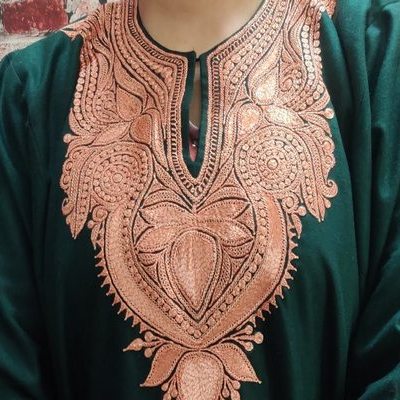
Tilla Pheran
A phiran is a traditional Kashmiri dress worn by both men and women. An anti-fit is typically composed of woollen fabric, such as tweed, and features deep pockets, a length that falls just below the knees, and slits that may or may not be present. It comes with a soft removable lining. It is constructed of cotton or lighter fabric and has the same dimensions as the pheran. They give double layer insulation and added warmth when worn one over the other.It also prevents the pheran from being burned by Kangri, a ceramic fire pot that is an important part of the winter landscape. Because it feels like your own weighted blanket, Pheran is also known as the winter cloak. You wrap yourself in a Kangri, tuck your arms and legs into a Pheran, and withdraw from the world. Men's pherans are typically basic, however women's pherans are made of diverse materials and fashioned with various embroidery.
Tilla Dozi is a well-known embroidered work that was used to design them, and the Pherans who wore it were known as Tilla Pherans. Strings of white, red, yellow, golden, and silver metallic threads are braided in exquisite designs on the Pherans in Tilla Pherans. A Tilla Pheran must be included in a bride's wardan (trousseau). It's also an important element of the wedding attire, as Kashmiri tradition dictates that brides wear Pheran for their aab shehrun (a ceremonial bath). With so much history and culture behind it, one thing is certain: fashion may come and go, but Tilla Pheran is here to stay.


